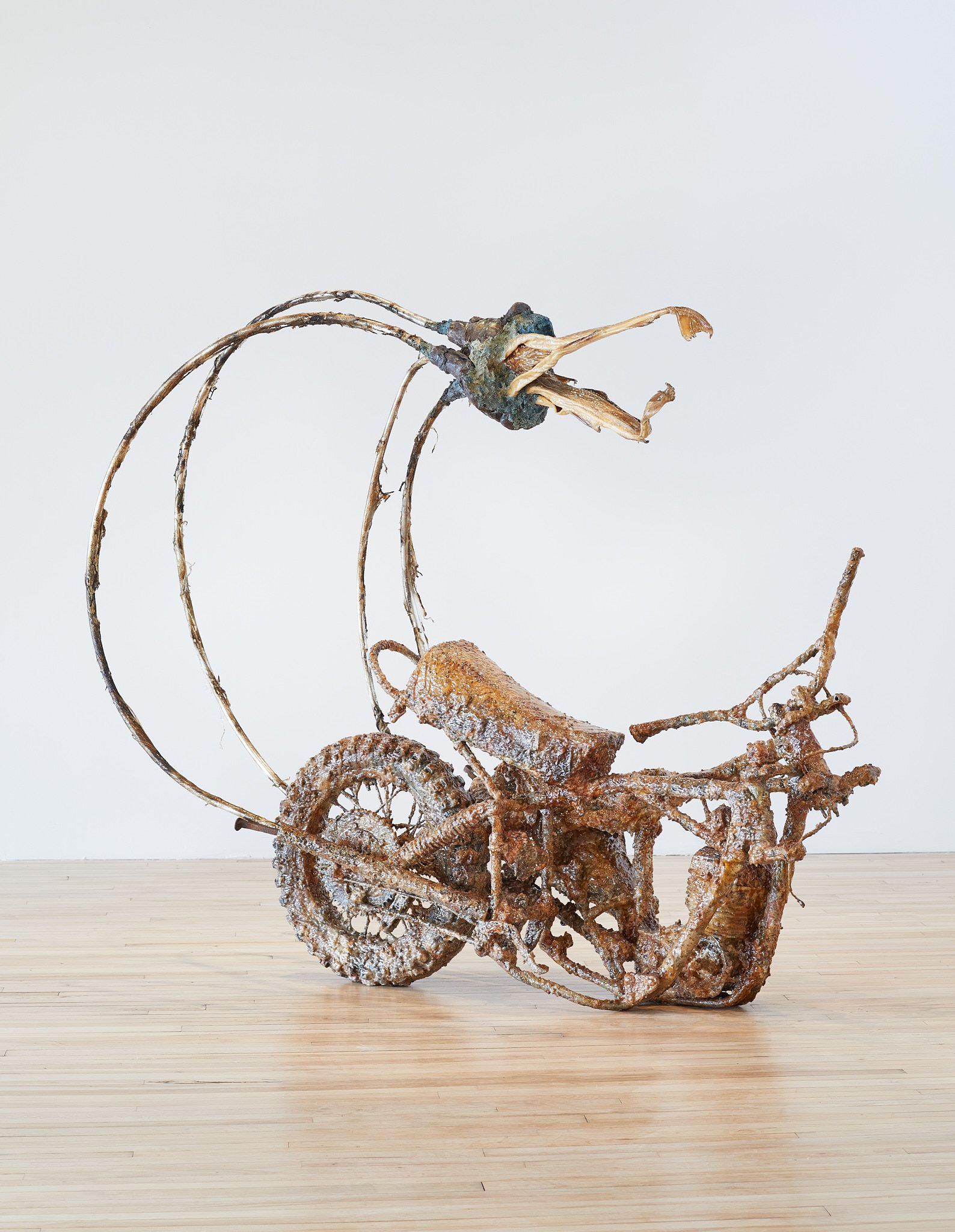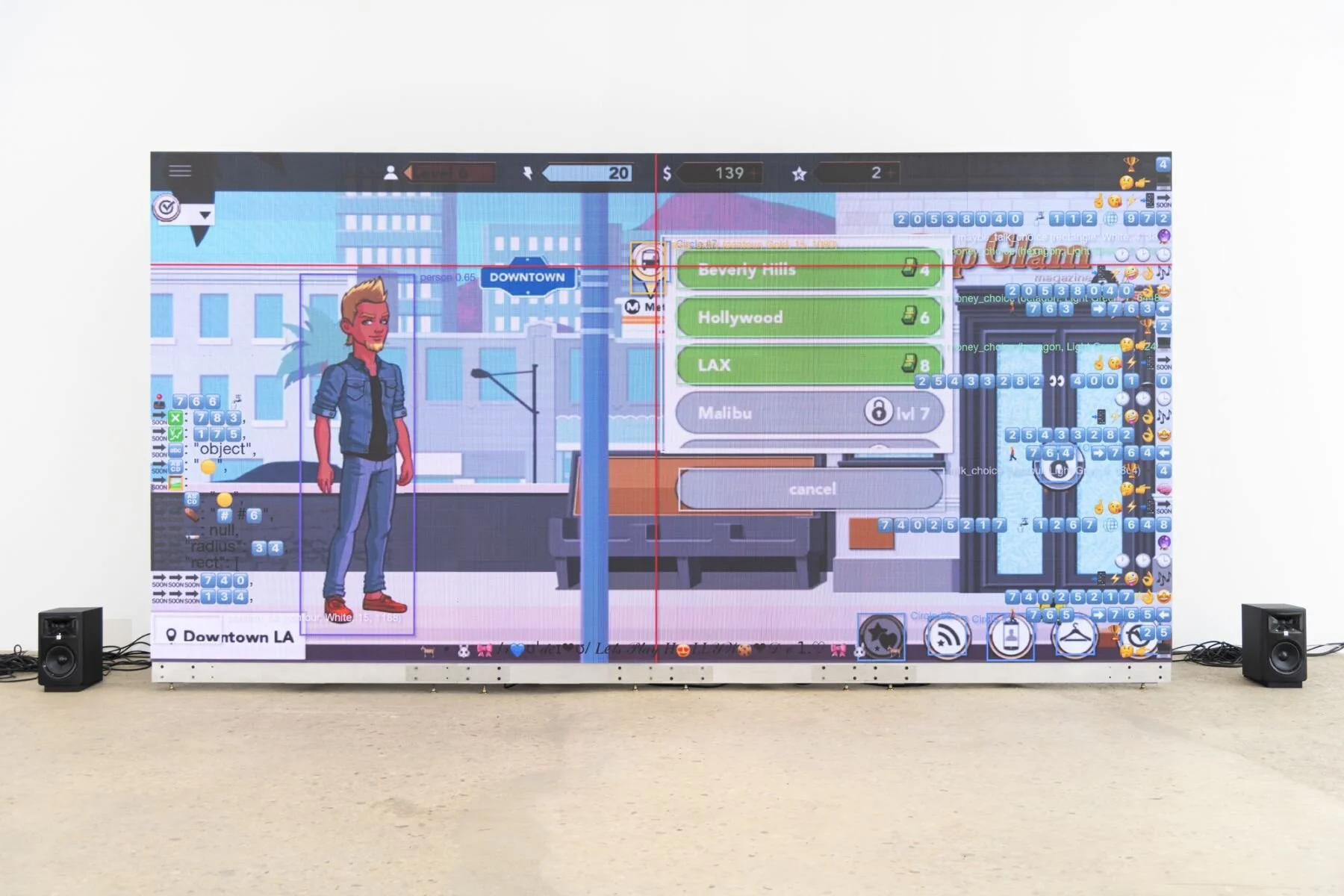Betting on the Figure at Volta 2018
The press preview for this year’s Volta art fair happened to be held at the same time as both the Armory Show preview and a major winter storm (the question of which was worse is open for debate). Those who braved the trek to the west side piers had the fair more or less to themselves for a few hours, until people started trickling in from the Armory opening. Aside from this strangely empty preview, Volta wasn’t that different from most of the other fairs aside from its focus on showing individual artists rather than a selection from a gallery’s roster. Rather than hedging their bets and showing a range of work to appeal to a variety of collectors and buyers, galleries have to go all-in on one artist’s style and vision. For one reason or another, many galleries went with figurative painters this year. Maybe this is indicative of a larger trend, or perhaps the lasting appeal of the figure throughout art history just makes the figure a safe bet during difficult times. The field of figure painters was hardly monolithic, though: Many different approaches to this ages-old motif were displayed on Pier 90’s temporary white walls.
Didier William
Ayida’s Curtain / Rido Ayida a, 2018
Collage, acrylic, and wood carving on panel
60 x 48 inches
Image courtesy of Anna Zorina Gallery.
Didier William — fresh from his recent solo show at Bushwick’s Tiger Strikes Asteroid — has a half-dozen new paintings in Anna Zorina’s contribution to “Aesthetics Matter”, a special section of the fair curated by Mickalene Thomas and Racquel Chevremont. His characteristic figures return, constructed from conglomerations of eyes carved into the surface of each panel and set against painted and collaged environments. In Ayida’s Curtain / Rido Ayida a (2018), these figures remain concealed behind a vibrantly-colored curtain, with small fragments of them only visible through rips and tears in the fabric. This curtain hangs above a stage of wooden planks, the figures either preparing for a performance or retreating from the spotlight in its aftermath. La Croix a Samedi / Two Sons (2018) has no paint on it: The two figures, grappling or embracing, threaten to dissolve into the swirls and whorls carved around them.
Installation view of Blair McLaughlin at Arusha Gallery
Image courtesy of the gallery.
Showing at Edinburgh-based Arusha Gallery’s booth, Scottish painter Blair McLaughlin’s eclectic approach to figuration is rooted in classicism and the baroque. His large-scale canvas Ascension (2017) straddles the classical and contemporary, depicting mounted police in full riot gear against a background that recalls a landscape by Poussin, complete with a crumbling ancient ruin. Another piece, After Salvador Rosa’s Battle (2017) features a chaotic melée in which the combatants are merged into one amorphous mass of dark paint. Behind them is another classical landscape with cliffs, trees, and ruins below a bright blue sky. His smaller works are also all over the place: A painting of a girl wearing a one-piece swimsuit and spreading her legs hangs on the same wall as a Leonardo-esque Madonna.
Partial installation view, Jean-Pierre Roy: “Aporetic Sequence” at Gallery Poulsen
Image courtesy of the gallery.
A sense of baroque theatricality also permeates Gallery Poulsen’s booth. The Copenhagen-based gallery has several artists in their roster whose work achieves levels of detail that make reality look unrealistic, including John Jacobsmeyer’s videogame-inspired paintings on aluminum and Christian Rex van Minnen’s images of bloated, tattooed candy-golems. Another hyper-realistic painter, Jean-Pierre Roy, is the focus of the gallery’s booth at Volta. His Aporetic Sequence series of paintings features faceless characters, identifiable only by their outfits, struggling against the irresolvable contradictions of vision, represented as multi-colored floating shapes. Looking like something out of a higher dimension that human sight cannot comprehend, this entity grabs and throws Roy’s characters around as they struggle to hold on to it. Behind them is an unnaturally purple and pink sky and an unidentifiable rocky landscape that could be Mars just as easily as it could be California. Roy’s absurdist drama is played out across nine canvases, but this sequence has no obvious beginning or end. It is an infinite loop, a conflict that, by its very nature, cannot be resolved.
William Buchina
Common Structures, Simple Mechanics & Varying Degrees of Affection #4, 2017
Acrylic on panel
30 x 40 inches
Image courtesy of Slag Gallery.
The absurd and the surreal can also be found in the paintings of William Buchina, on view at Slag Gallery’s booth. Buchina’s paintings have a highly illustrative style, with figures and objects intricately outlined in black against splotchy fields of color that don’t always stay inside the lines. Tones often overlap or underfill their boundaries like a mis-registered silkscreen print. This combination of bizarre imagery and retro-illustrative aesthetics resembles the work of Neo Rauch, with images that adhere to their own internal logic while otherwise defying easy explanation. While Buchina’s paintings reference East German influences, the painters showing with Amsterdam’s Rutger Brandt Gallery lived it. Enrico Freitag and Anna Bittersohl, both hailing from the former DDR, share a booth that—like their homeland at the time—is split in two. Freitag’s paintings of factory workers hardly seem to celebrate manual labor: Individual figures fade into the shadows or are lost in a crowd of anonymous, interchangeable uniformed workers. Bittersohl’s canvases provide a counterpoint in which paint is handled joyously rather than laboriously, with figures emerging from vibrant strokes and skeins of oil.
Enrico Freitag
Labora 18-12, 2018
Oil on canvas
120 x 100 cm (approx. 47.25 x 39.5 inches)
Image courtesy of Rutger Brandt Gallery.
An exhaustive analysis of every figure painter at Volta this year would accomplish nothing useful: There was plenty of uninteresting or generic figurative art on view, just as there was plenty of impressive abstract painting and sculpture (not much video or conceptual work, though). But there were those artists who did something unique, eye-catching, or emotionally resonant with the timeless human figure, and their work made the frozen journey worth the time and energy and cab fare.
Anna Bittersohl
Balls, 2017
Oil on wood
30 x 25 cm (approx. 12 x 10 inches)
Image courtesy of Rutger Brandt Gallery.
Cover image: Detail from Jean-Pierre Roy, Landscape with Divergent Perceptual Reference Frames, 2017, oil on linen, 75 x 55 inches. Image courtesy of Gallery Poulsen.
















